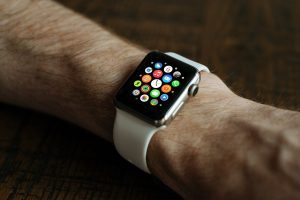
When the people at iFixit took the new Apple Watch apart they found something strange, there wasn’t the expected optical module you usually find to measure your blood flow rate but there is a pulse-oximeter which can measure your oxygen levels.
It works by shining a light through your skin and it measures changes in your blood flow. As your pulse increases it changes the light transmission through the skin which a sensor measures. Additionally it can test how oxygen levels affect the way your blood interacts with light. The more oxygen in your blood, the brighter the red of the blood and the more infrared light it absorbs.
This component is currently disabled in the Apple Watch for unknown reasons but it looks as if Apple hope in the future to allow their customers to be able to monitor their own blood oxygen levels.
Being able to do this would be incredibly useful for a lot of people. If you’re hiking you can get a better sense of how you’re adapting to high altitudes, an athlete can monitor their performance and those with medical conditions such as asthma can instantly see if their oxygen levels are dropping. For those using oxygen at home you could simultaneously see if the oxygen that you are breathing in is improving your oxygen levels. A record of your data would be stored as your activities alter throughout the day and your doctor could use these results to help improve your treatment.
There is a danger that people may use the device as a self-diagnostic tool with regards to their health. This may be one of the reasons that Apple has left it disabled for now. Also perhaps there are issues with the accuracy of the measurements. It may be that arm hair, sweat and dirt could prevent the infrared light sensors from being accurate enough.
The possibility that very soon in the future we may have yet another helpful device to help monitor our health at home is exciting and good news for many suffering chronic respiratory diseases. It would be a helpful way for many to understand how their disease affects their respiration throughout the day and enable them, with their doctor’s help, to react quickly to changes in their blood oxygen levels to improve their health and quality of life.
References: http://thenextweb.com and http://venturebeat.com




